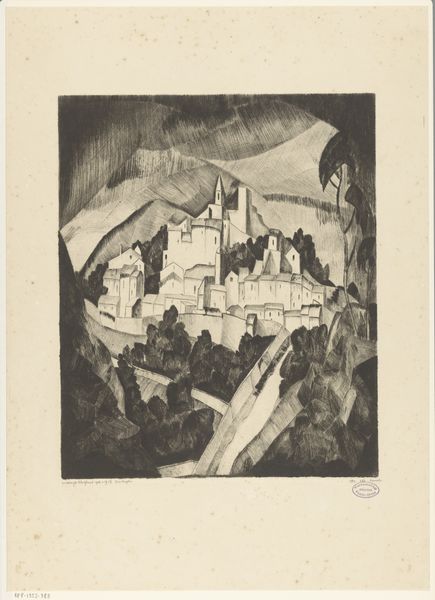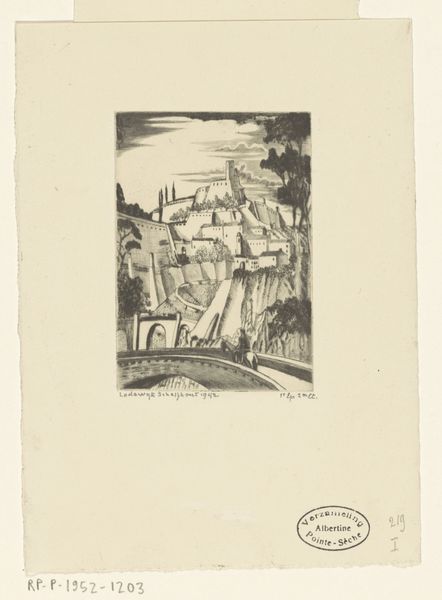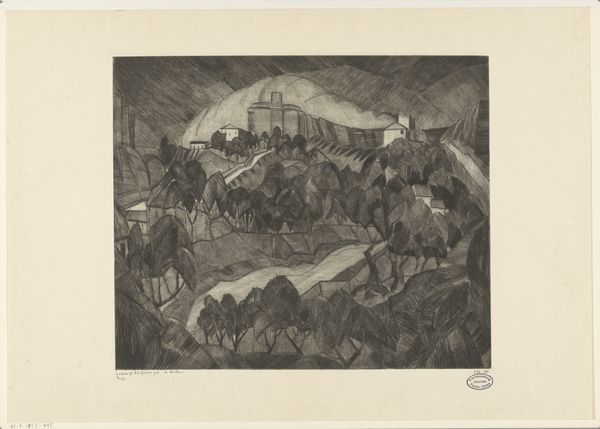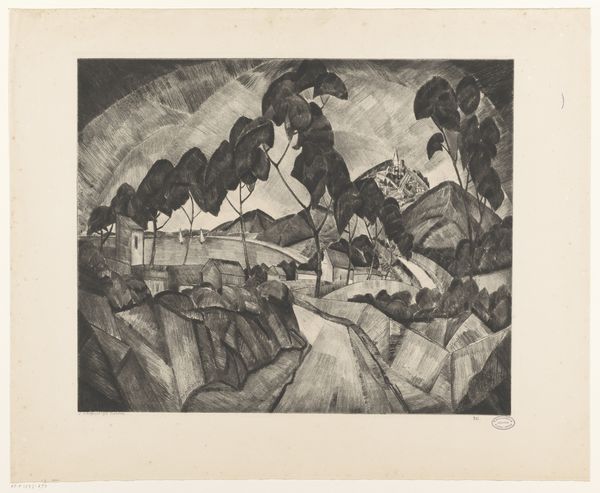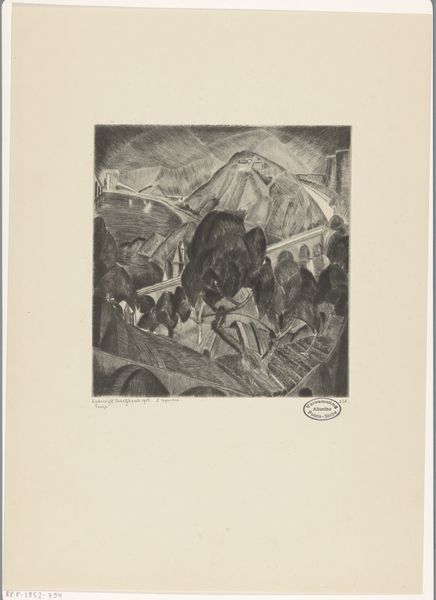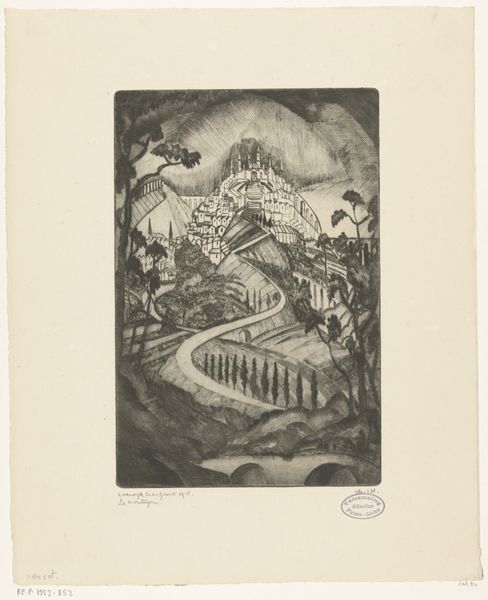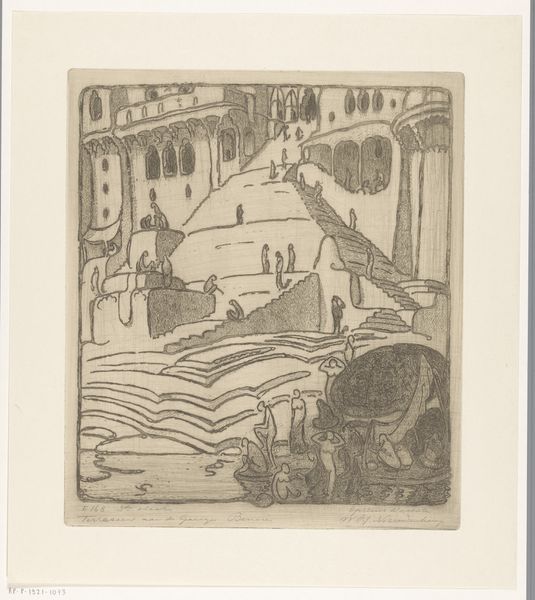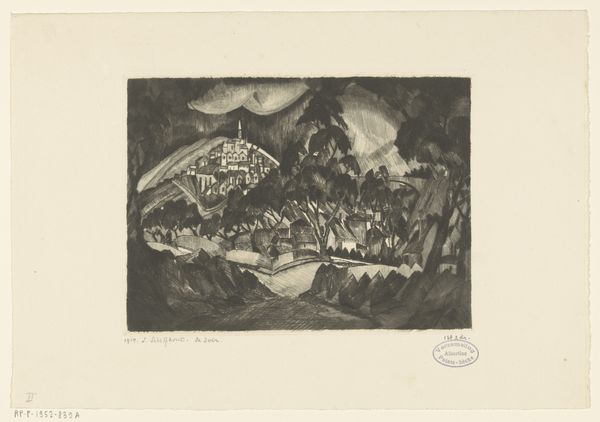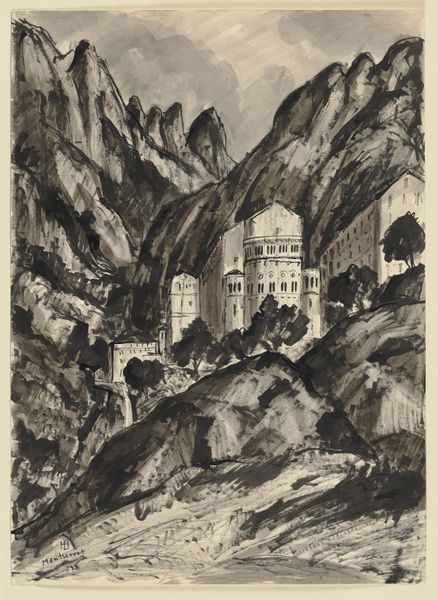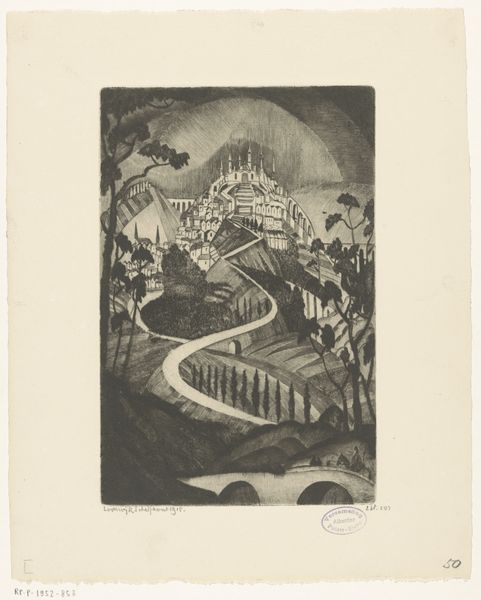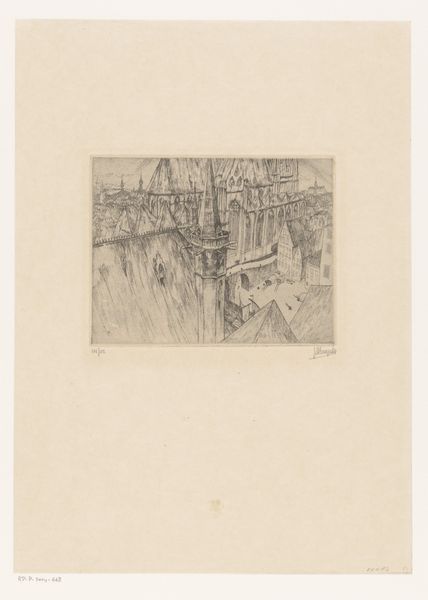
print, etching
#
art-nouveau
# print
#
etching
#
landscape
#
geometric
#
cityscape
Dimensions: height 378 mm, width 314 mm
Copyright: Rijks Museum: Open Domain
Editor: This is "Les Angles I," an etching by Lodewijk Schelfhout from 1912, residing here at the Rijksmuseum. I'm struck by how simplified the landscape is, almost geometric, and the contrast between the light buildings and the darker, textured hills. What’s your perspective on it? Curator: This work resonates deeply when considered through its materiality. Schelfhout chose etching, a printmaking process demanding physical labor and chemical interaction. How does this choice speak to the early 20th-century's fascination with industrial production? The etched lines mimic the precision of engineering, mirroring the societal embrace of mechanization and its aesthetic. Editor: So you're saying the process is key to understanding the message? It wasn’t just about depicting a town? Curator: Precisely. Look at the Art Nouveau influence; those stylized trees. It softens the geometric forms but also nods to commercial design. These prints were often disseminated widely. Consider the accessibility – the 'means of production,' if you will – made this image available beyond elite art circles, shifting who could engage with artistic representations of place. What socio-economic implications do you infer from that shift? Editor: It makes art more democratic. The accessibility would have influenced the perception and cultural value people gave the location of “Les Angles I”. Curator: Exactly. And that mass production is tied to the commercial networks. Editor: This makes me consider how printmaking enabled broader distribution, shaping perception of places through accessible, reproducible images. Thanks, that was very interesting. Curator: My pleasure, examining the means by which art reaches an audience is always very informative.
Comments
No comments
Be the first to comment and join the conversation on the ultimate creative platform.
